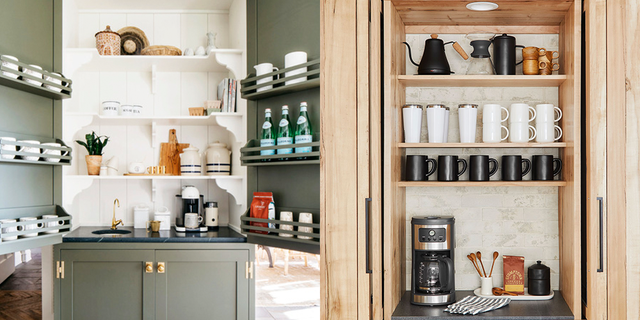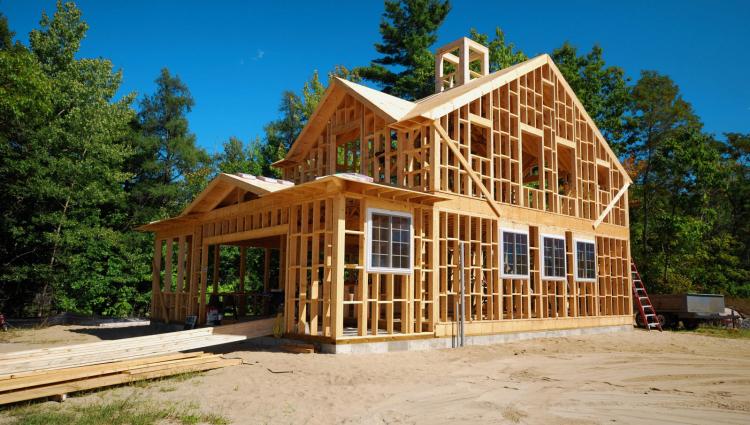When Matthew and Joanna Hofmann founded their Santa Barbara–based company Living Vehicle in 2017, they set out to create a product unlike any other in the RV world—a luxury, net-zero mobile home designed for full-time living with complete freedom from the grid.
The couple has made incredible strides—and today they’re giving Dwell readers an exclusive first look at their latest models. The expanded 2020 Living Vehicle line features three luxury trailers—the CORE, MAX, and PRO—all of which are off-grid and off-road ready with enough solar energy capacity to run sun-powered air conditioning units day in and out.
“Every single part of the Living Vehicle design and engineering is completely new for 2020,” says Matthew. “It has a 100% aluminum structure, frame, and floor—with no wood products part of the structural system. It also has outstanding insulation design, with extensive thermal testing for very hot and very cold travel.” The Living Vehicle is wrapped in anodized, marine-grade aluminum that is highly weather-, water- and scratch-resistant.
The master bedroom is furnished with a queen bed and a cool-touch 10-inch memory foam mattress beneath a large skylight. Compared to last year’s model, the 2020 Living Vehicle offers two feet of extra space.
“Every Living Vehicle is handcrafted to the highest quality standards possible,” says Matthew, a trained architect who worked on over 400 custom mobile projects for clients around the world prior to starting Living Vehicle. The Hofmanns also draw inspiration from over a decade of experience living and working in various mobile homes—from small boats to luxury motorhomes—most of which lacked four-season appeal and sufficient storage.
The Living Vehicle’s hybrid handmade chassis measures 29 feet in length, with an exterior width of 8.5 feet. The company recommends a full-size truck with towing capacity of at least 14,000 pounds for the CORE and 16,000 pounds for the PRO. The Living Vehicle team has plans to seamlessly integrate certain models with electric towing vehicles, such as the Tesla Cybertruck.
The Living Vehicle comes standard with 1,320 watts of solar, and configurations can run up to 3,080 watts. The lightweight solar panels flush-mounted on the roof are hail- and impact-resistant and can withstand extreme winds. The manufacturer offers a 25-year 85% output warranty guarantee.
“We created LV out of our own frustrations with the limitations of the existing products on the market,” notes Joanna. “We live in these units full time and take them to extreme conditions and off-grid environments. Collectively, the LV team has over 50,000 miles under our belt with our own units. We quite literally are our own customers.”
New to 2020, Living Vehicle gives customers the option to choose between three models—of the same size and layout—that mainly differ in solar energy capacity. The base CORE model starts with over 200% more solar power compared to the company’s 2019 model. The PRO model has 540% more energy capacity than the CORE configuration.
New to the 2020 model, the all-aluminum cabinetry with integrated handles is specially designed to handle a mobile environment.
The compact kitchen is equipped with a 12.5-cubic-foot fridge and freezer; a moveable kitchen island with storage; a cooktop with range hood; a water filter; a pull-out trash can; a microwave; a faucet; and a pantry. Other appliances, such as a dishwasher and wine cooler can be added on.
Using a process they call “design by experience,” the Hoffmans create a new Living Vehicle model every year, collect customer feedback, and creates a series of prototypes that they run through a battery of tests—including off-grid and off-road excursions in both hot and cold climates. The iterative process allows them to continually refine the design and optimize for maximum comfort and efficiency.
As a result, the Living Vehicle isn’t created for mass production by design. “We choose to do one thing, and be the absolute best we can be at that one thing,” says Matthew, whose team handcrafts every Living Vehicle at their Santa Barbara factory. Approximately 30 Living Vehicles—not counting the 2020 models—have been produced to date. “Limiting production allows us to focus on quality first and create an intimate connection with our customers, who directly influence the direction of Living Vehicle.”
The living/dining area comes with a hardwood table that lowers to create a sleeping platform.
The dining/living area transforms into a queen-sized bed. A Euro Loft option increases sleeping capacity to six with a hidden full-size bunk that lowers from the ceiling.
“The buildup to LV 2020 has been going on for over three years,” notes Joanna. “That’s over three years of refinement and R & D since the first unit we took on the road and lived in. This ties into our low production and desire to stay focused on one model type and to not diversify to different sizes and applications. We’re obsessed with quality, perfecting and evolving our model over time to reach out ultimate net-zero goal.”
In addition to increased solar capacity and solar-powered air conditioning, the 2020 Living Vehicle has been fine-tuned with a variety of modifications both big and small. Of the changes, the Hofmanns’ favorite features are the increased insulation for improved four-season comfort (an extra inch of insulation brings the walls and floors to R-13 and the ceiling to R-25), the new all-aluminum custom cabinetry, and the greatly expanded storage.
The Living Vehicle kitchen has a two-burner cooktop. It can be upgraded into a chef’s kitchen with a marine-grade oven and a three-burner stovetop.
All units come with a 42″ 4K Smart HDTV and SONOS sound system that can be upgraded with additional media features.
“Using the unit in real life, we’ve learned what’s important. Traveling with pets, working on the road, cooking, staying fit—we’ve considered all these daily activities and incorporated them into the design from a functional, as well as enjoyment, perspective,” says Joanna. “I joke that if something annoys us enough, we find a way to design a solution for it in the next model. So far that approach is working!”
The 2020 Living Vehicle also offers customers unprecedented customization with nearly 20 option packages to choose from. Owners can kit out the trailer with luxury finishes and a chef’s kitchen, or even enhance the vehicle’s off-road capabilities and extreme weather resistance.
The bathroom is directly opposite of the entrance.
The spa-style bathroom includes a 32″ x 36″ wet-dry shower with a rainfall shower head and a skylight above.
The standard Living Vehicle models come with an all-porcelain, foot-flush toilet. Customers can also upgrade to an electric toilet with a bidet or a composting toilet.
“We’re guided by one goal—and that’s to create the best darn luxury travel trailer that has complete independence,” says Matthew. “With that comes our ultimate goal of creating a net-zero product with no reliance or burden on the world when it comes to energy production or waste output.”
Living Vehicle is currently only available in the U.S. and Canada. The company is close to selling out of their planned 2020 production of 25 units, with the first deliveries expected in July. The team hopes to open up tours of their Santa Barbara headquarters to serious prospective customers by summer 2020.
Learn more by visiting Living Vehicle’s website.
Starting at $199,995, the 2020 Living Vehicle CORE model provides 8.7 kWh of solar energy stored in nickel manganese cobalt battery packs.
Starting at $274,995, the MAX Living Vehicle has nearly 300% more solar energy capacity than the CORE model with a 24 kWh battery pack.
The 2020 Living Vehicle PRO is the company’s most technologically advanced model (and Matthew’s favorite for its ability to remain off-grid continuously in the right conditions) with a 47.66 kWh energy capacity, double the inverter power of the other models, and a 5.5 kW generator. Prices start at $349,995.
Living Vehicle 2020 floor plan
The entire exterior has been redesigned with dual waterproofing seals. The edge-to-edge glass frameless windows feature minimal seams to limit water infiltration.
One of the Living Vehicle’s most popular features is its self-supporting deck, which serves as an extension of the indoor living space and can be easily lowered or raised with a garage door–style support spring. The updated deck is now rated for 1,500 pounds.
The 2020 Living Vehicle’s new folding stair system is rated for several hundred pounds and comes with adjustable legs.







